I recently completed (a first draft of) a solo percussion piece titled Peak for Judith Shatin’s seminar class. The instrumentation of the piece is below:
The performance notes read:
This piece explores arm independence and the smooth transference of energy between multiple instruments within a gesture. Care should be taken to make these transfers as smooth and convincing as possible. More explicitly, the individual continuity of multiple simultaneous lines (played by the separate hands) is more important than absolute precision of the collective rhythm.
There should be a sense of energy continuing through each gesture, particularly within silences (i.e. each note should lead to the next). Likewise, the energy level of each section should feel relative to the sections preceding and proceeding it. Total running time ranges from 6 to 7 minutes, depending on chosen tempo and lengths of fermati.
This piece consists of 5 sections. First is the introduction, which establishes the conceptual gesture that gets used throughout the piece: a rhythm played on a single instrument that rises, peaks, and falls in volume and how it can relate to another similar “peak” on a different instrument. The glockenspiel is not used in the introduction.
Here is the piece’s key:
And the “Introduction” of Peak
Next is a section with material that spawned from an earlier, simpler (and more linear) idea for the piece, “complexified” in this form through substitutions and rearrangement. The premise is the following: the “peak” gestures are played on the drums, dovetailed into one another, with a glockenspiel gesture punctuating the “top” of each “peak”. In the first realization of this concept, each series of 6 peaks (grouped into 3 + 3) was rhythmically grounded in one subdivision of the tempo of the piece (quarter note, eighth note, etc.) and as this subdivision got smaller the number of notes in the glockenspiel gesture would contain more pitches (1 to 2 to 4, etc.). Further, these pitches were chords built on top of a simple descending line (C,B,Bb,Ab,G,Gb).
The section as it stands now varies the subdivision of each tempo and corresponding number of notes in the glockenspiel gesture with each “peak”, increasing in intensity for the whole of the second section. The speed within each gesture also becomes more varied as the section progresses (starting with static quarter notes but progressing to gestures that start with half notes and speed to triplet eighths, for example).
Next is the meta “peak” and plateau of the piece, a section that explores playing the tambourine by shaking (along with the shaker) and also interjects a climactic gesture in the glockenspiel: an A5 (a pitch that does not show up in the previous section) that crescendos/speeds, then diminuendos/slows, representing a bleeding of the “peak” gesture concept into that instrument and clearly separating the piece into two halves.
The fourth section returns to the texture of the second section except that the melody is ascending and modified (F,G,A,Bb,C,D) and the subdivision generally gets larger as the section progresses. New subdivisions are explored (dotted eighth, for example) and the vocabulary for the relationship between consecutive “peak” gestures is expanded from the second section.
Finally, the piece ends with an “epilogue” that explores the delay between two “peak” gestures briefly, before ending monophonically in the muted snare and then the muted low tom.
“Epilogue" of Peak
The range between exposed compositional transformations (the transformation from static to dynamically changing subdivisions, for example) and hidden systems at work (glockenspiel pitch structure) is large in this piece, and I’m curious to see how this comes across in performance. I will experiment with this more (or less, if it ends up being unsuccessful) in the future.







